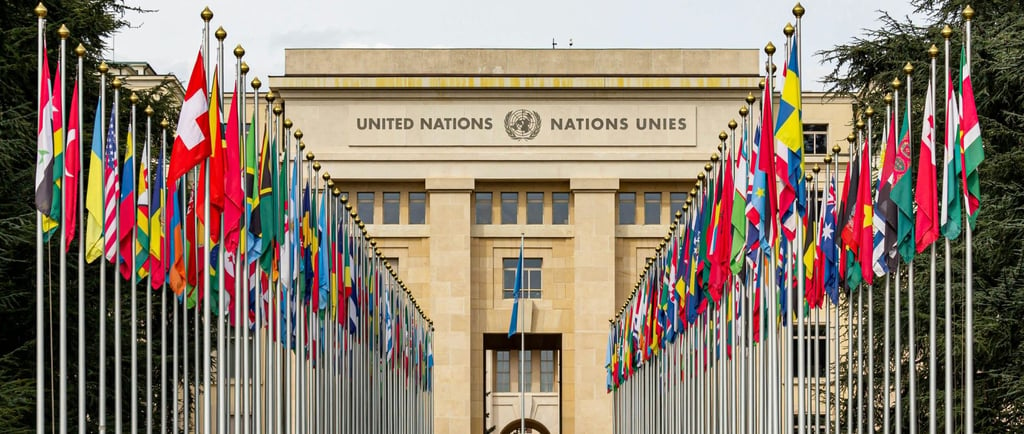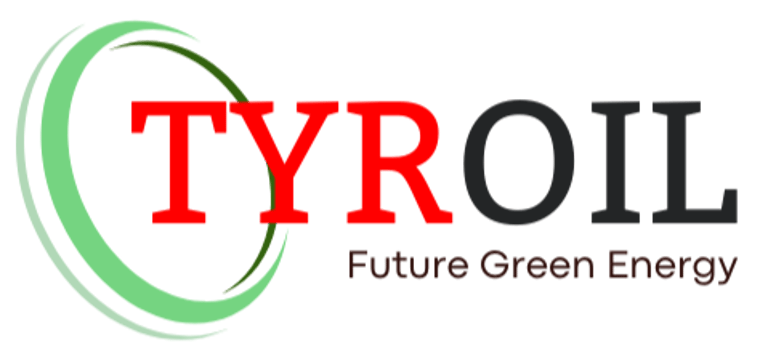The Diplomatic Fuel: How TPO Can Foster International Cooperation (Beyond Conflict)
THE STORIES
TYROIL
6/27/20254 min read


In a world often fractured by geopolitical tensions and competing national interests, it’s easy to lose sight of the shared challenges that bind humanity. Climate change, resource scarcity, and waste management are universal problems that transcend borders and ideologies. While conflicts dominate headlines, there’s a quiet revolution brewing in the realm of sustainable solutions, one that holds the potential to not only address these challenges but also to foster unprecedented international cooperation. This is the story of Tire Pyrolysis Oil (TPO), a resource that could become a Diplomatic Fuel, building bridges between nations through shared environmental and energy goals.
Shared Global Challenges: A Universal Call to Action
Every year, billions of end-of-life tires accumulate globally, posing a significant environmental burden. These discarded tires consume vast landfill space, can become breeding grounds for pests, and, if ignited, lead to uncontrollable and highly polluting fires. Simultaneously, nations worldwide grapple with the complex issue of energy security, seeking stable, affordable, and sustainable sources to power their economies and improve their citizens' lives. These are not isolated problems; they are interconnected global challenges that demand collective action [1].
Traditional approaches to these issues often involve competition for resources or the imposition of unilateral solutions. However, the sheer scale of the waste tire problem and the universal need for energy security present a unique opportunity for collaboration. Imagine a scenario where nations, instead of vying for dwindling fossil fuel reserves, work together to transform a common waste product into a valuable energy source.
Collaborative Solutions: The Pyrolysis Partnership
Tire pyrolysis technology offers a compelling framework for such collaboration. It’s a process that converts waste tires into TPO, recovered carbon black, and syngas – all valuable resources. The beauty of this technology lies in its applicability across diverse geographical and economic contexts. This shared potential can be the basis for powerful international partnerships:
Technology Transfer and Knowledge Sharing: Developed nations with advanced pyrolysis technologies can collaborate with developing nations, transferring expertise, training local workforces, and establishing sustainable waste-to-energy infrastructure. This isn't just about selling equipment; it's about empowering communities with the knowledge to manage their own waste and generate their own energy [2].
Joint Ventures and Investment: International consortia can be formed to invest in large-scale pyrolysis plants in regions with abundant waste tires but limited capital. These joint ventures can share risks, pool resources, and ensure equitable distribution of benefits, fostering economic interdependence.
Standardization and Best Practices: Nations can collaborate on developing international standards for TPO quality, environmental performance of pyrolysis plants, and responsible waste tire collection. This ensures consistency, builds trust, and facilitates cross-border trade in TPO and its by-products.
Addressing Transboundary Pollution: Waste tires often cross borders, and their environmental impact (e.g., tire fires) can affect neighboring countries. Collaborative pyrolysis projects can address these transboundary pollution issues, turning a source of friction into a point of cooperation.
By working together on tire pyrolysis, nations can move beyond transactional relationships to build genuine partnerships based on shared goals and mutual benefit. It transforms a problem into a platform for progress.
Building Bridges, Not Walls: Interdependencies for Peace
The most profound impact of TPO as a diplomatic fuel lies in its ability to create interdependencies that promote peace and mutual prosperity. When nations have a vested interest in each other's environmental and energy success, the incentives for conflict diminish, and the pathways for cooperation expand:
Shared Economic Benefits: Successful pyrolysis projects create jobs, generate revenue, and provide stable energy sources, benefiting all participating nations. This shared prosperity becomes a powerful deterrent to conflict.
Mutual Problem Solving: The act of collaborating on complex technical and logistical challenges, such as establishing a waste tire collection network or optimizing TPO production, builds trust and understanding between nations. It shifts the focus from competition to collective problem-solving.
Soft Diplomacy: Environmental and energy cooperation can serve as a form of soft diplomacy, creating channels for dialogue and collaboration even when traditional political avenues are strained. It allows nations to find common ground on issues that affect all humanity, fostering a sense of shared responsibility and mutual respect.
A Story of Collaboration: From Conflict to Common Ground
Imagine the fictional nations of Veridia and Aethelgard, historically at odds over resource control. Their borders were tense, and trust was low. Both, however, faced a growing crisis of waste tires and a pressing need for energy security. A visionary group of scientists and diplomats proposed a joint initiative: a cross-border tire pyrolysis project. The idea was simple yet revolutionary: Veridia, with its advanced pyrolysis technology, would partner with Aethelgard, which had a significant waste tire problem and a need for energy.
Initial negotiations were fraught with suspicion. But as technical teams from both sides began to work together, focusing on the practicalities of waste collection, plant construction, and TPO production, barriers slowly began to crumble. Farmers from Aethelgard found new income collecting tires, and engineers from Veridia shared their expertise. The project created jobs on both sides of the border, and the TPO produced provided a stable, affordable energy source for industries in both nations. The shared success of the project, born out of a common environmental challenge, fostered a new sense of mutual benefit and understanding. The
Diplomatic Fuel, in this case, TPO, had indeed built bridges where walls once stood, demonstrating that shared environmental goals can pave the way for a more peaceful and prosperous future.
Conclusion: TPO – A Tool for a More Peaceful, Sustainable Future
Tire Pyrolysis Oil is more than just an energy source; it is a powerful tool for fostering international cooperation and building a more peaceful, sustainable future. By addressing universal challenges like waste management and energy security, TPO provides a common ground for nations to collaborate, share knowledge, and create mutually beneficial economic interdependencies.
In a world yearning for stability and cooperation, the humble waste tire, transformed through pyrolysis, offers a tangible pathway to building bridges, not walls. It demonstrates that even amidst geopolitical tensions, shared environmental and energy goals can unite nations, leading to a more resilient, prosperous, and peaceful global community.
More Related Articles:
From Lab to Large Scale: The Journey of Pyrolysis Technology to Global Impact
The Global Footprint: How Tire Pyrolysis is Solving a Worldwide Problem, One Tire at a Time
The Invisible Shield: How Pyrolysis Protects Our Planet from Tire Waste
The Circular Story Unfolds: Tire Pyrolysis as a Blueprint for ESG Success
References
[1] Energy Recovery from Waste Tires Using Pyrolysis. MDPI. [https://www.mdpi.com/1996-1073/13/7/1817]
[2] A review on waste tires pyrolysis for energy and material recovery from the optimization perspective. ResearchGate. [https://www.researchgate.net/publication/381869315_A_review_on_waste_tires_pyrolysis_for_energy_and_material_recovery_from_the_optimization_perspective]
[3] Review in Waste Tire Management—Potential Applications in Mitigating Environmental Pollution. ResearchGate. [https://www.researchgate.net/publication/373306416_Review_in_Waste_Tire_Management-Potential_Applications_in_Mitigating_Environmental_Pollution]
